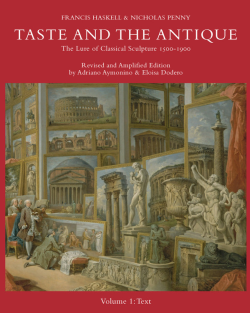
About the Book
For several hundred years, until about 1900, a limited number of antique sculptures were as much admired as are the Mona Lisa, Botticelli’s Birth of Venus or Michelangelo’s David today. They were reproduced in marble, bronze and lead, as plaster casts in academies and art schools, as porcelain figurines for chimneypieces and as cameos for bracelets and snuffboxes. They were celebrated by poets from Du Bellay and Marino to Byron and D’Annunzio, and memorably evoked by novelists as diverse as Marcel Proust and Nathaniel Hawthorne, George Eliot and Charles Dickens. Copies of some of these statues can be seen at Pavlosk and Madrid, at Stourhead, Charlottenburg, Malibu and Versailles, and in countless gardens, houses and museums throughout the world.
How and when did these particular sculptures achieve such a special status? Who were the collectors, restorers, dealers, artists, dilettanti, scholars and archaeologists who created their reputations? Under what names (often wildly fanciful) did they first become famous? How were they interpreted, and how and when and why did their glamour begin to wane? These are some of the problems that are confronted in Taste and the Antique.
Taste and the Antique has become a classic of art history since its original publication in 1981. This revised and amplified edition significantly updates the information based on new research undertaken in the last several decades, as well as expanding examples of the reception and influence of these works by artists and collectors from the Renaissance through to contemporary art.

About the Author
Dr. Adriano Aymonino is Programme Director for the MA in the Art Market and the History of Collecting at the University of Buckingham in England. His publications include Drawn from the Antique (Sir John Soane’s Museum, 2015); Enlightened Eclecticism (Yale University Press, 2021, winner of the 2022 Berger Prize for British Art History); and a revised edition of Francis Haskell and Nicholas Penny’s Taste and the Antique (2024). He is also an associate editor of the Journal of the History of Collections.